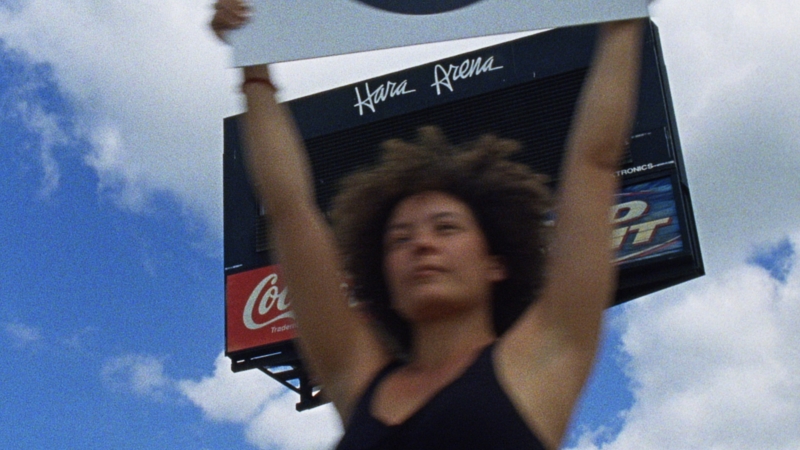As part of the Glasgow Short Film Festival 2018
The Glasgow Short Film Festival 2018 specialises in showcasing a vast and intriguing array of short films from around the globe. This year, there is a focus on American artist and director Kevin Jerome Everson. Throughout the festival there are three separate short film programmes, a masterclass and a mammoth eight-hour screening of his experimental film Park Lanes.
The Kevin Jerome Everson 1 shorts film programme features six shorts that showcase the director’s work. IFO kicks things off and is a ten-minute dreamlike investigation of a UFO sighting in which memory, movement and documentary are all presented to give a trancelike account of this unlikely encounter. Round Seven is a new work that again takes a documentary-style approach to filmmaking. We hear a boxer eloquently detailing his memories of an important fight, shot to focus on a fighter in a darkened room. Here emphasis is given to the physical body, whilst the voiceover underlines the filmmakers’ obsession with memory and local legends.
Emergency Needs presents footage of black mayor Carl Stokes giving a press conference after a public disorder in 1968. This is combined with newly shot material of a young black woman re-enacting the same scene. Here we see the updating of the events and a different visual perspective on the proceedings. According To is a short from 2007 and this, along with Sugar Coated Arsenic and Ear, Nose and Throat, showcase how inventive and prolific Kevin Jerome Everson is as a filmmaker. The topics of race, memory and community are highlighted with imagination and an eye for an expressive documentary style of filmmaking, even when the footage is actually staged and rehearsed.
The Kevin Jerome Everson 2 programme has a focus on work and community and again features six short films that present labour and process in innovative and interesting ways. Workers Leaving the Job Site is a reworking of the iconic Lumiere Brothers film. Everson has reimagined the film to focus on a job site in Columbus, Mississippi, where we see silent footage of workers leaving a factory. Some of the subjects acknowledge the camera, whilst others walk on past. The film allows us to look at the process of work and industry where we are a passive voyeur with a perceptive eye.
Labour is again emphasised with the short Sound That. Here we follow workers at the Cleveland Water Department as they go about their daily business. We see masters at work and observe as they express the craft and artistry behind their profession. Observing people doing what they are good are at is an absorbing experience and one which the filmmaker puts on screen with care and attention. This absorption is also experienced when the task being presented is a crime. Fe26 is a fictional film shot in a documentary style that follows two criminals who steal copper. Again we see masters at work, but the perspective is shifted to focus on criminal activity.
Company Line is a longer form documentary. Its topic is the mostly black community of Mansfield, Ohio, where scenes of the community are interspersed with interviews and again presentations of people at work. Fifeville takes a similar approach, except focuses its attention on a neighbourhood in Charlottesville, Virginia. Here the main concern is gentrification and the changing face of the local area.
The third and final selection of films underlines just how prolific and wide raging Kevin Jerome Everson’s work is. The director has made over 130 short films and nine feature films, so there is a lot to choose from. The Kevin Jerome Everson 3 programme has a focus on performance.
The Release focuses on the body and movement, with performers recreating American Football-style action in a slow and graceful manner. Stone takes a voyeuristic look at a street magician and Rita Larson’s Boy is a ten-minute short that details actors reading for a part in a 1970s sitcom. We see the actors as they recite their lines and we are exposed to the repetition and labour of a rehearsal room.
Ten Five in the Grass is a 30-minute presentation that showcases black cowgirls and cowboys preparing for a rodeo. Here process is again emphasised as we see the array of tasks, responsibilities and duties that the variety of participants go through. Repetition is emphasised as we are left to repeatedly observe as the workers tie ropes and lasso objects. Practice and work are two of Kevin Jerome Emerson’s concerns and Ten Five in the Grass is a perfect example of this.
